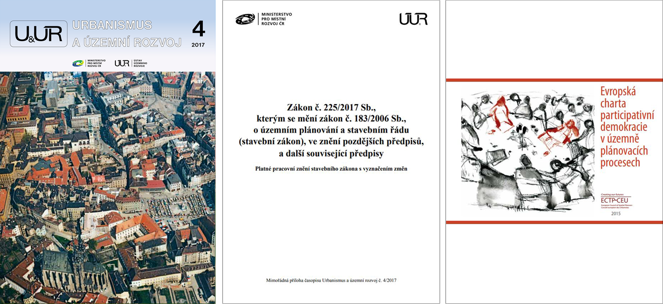
The system of urban greenery and the spatial plan of Liberec, by Karolína Hrbková
With a population of 100,000, Liberec is a beautiful city surrounded by mountains in the north of Bohemia. Its new spatial plan has been a work in progress since 2007. This article describes how professionals in Liberec work with landscape creation and maintenance in the context of spatial planning and how they solve problems occurring in the process.
Principles of spatial development on one’s own: yes or no? by Daniela Řežábková
Rather than entrusting the updates to the Principles of Spatial Development (with the exception of the first Principles, elaborated by an external body selected by public tender) to a planning institution, the Region of South Bohemia elaborates them at the Regional Office’s Department of Spatial Planning. This article tries to answer some essential questions such as why the Region prefers to work on the updates on its own, what positives and negatives this approach shows, whether this approach to the Principles and updates is suitable and which basic prerequisites are necessary for this work to succeed.
Protection of spatial values, by Marek Hanák
The spatial plan is a basic instrument for the creation and development of urban space. The main concern of all those participating in the creation of a spatial plan (including politicians, urban planners, architects and officials at spatial planning authorities) should be that people in cities live well. Hopefully, experts as well as the lay public have already grasped the idea that the cultivation of public space, with an emphasis on its revitalization and aesthetics, has an important impact on the overall quality of life of the urban population. If people are to feel good in an urban setting it is necessary that valuable buildings readily identifi ed with a location are protected and a manifold social composition of the population is maintained.
Reflections on urban planning; a lesson from the past, by Vladimír Matuš
According to Nietzsche, there are no facts, only interpretations. However, interpretations are always products of a particular era and of the opinions of those who interpret. An example of this is publications that deal with history. Nevertheless, lessons from the past can facilitate solutions for today’s problems or, at least, stimulate understanding of the present. Alvin Toffler encourages us to look for the sense of history with a concentration on undercurrents that are decisive for the direction history takes, saying that we must not succumb to the confusion caused by the superficial waves. Let us try and follow this advice in the quest for meaningful architecture and urban planning. To fulfil this purpose, we can start with the Renaissance.
Where is Brno heading? An interview with Michal Sedláček, Chief Architect of the City of Brno
Michal Sedláček graduated from the Faculty of Architecture of the Brno University of Technology and from the Studio of Architecture of the Academy of Fine Arts in Prague. After his studies he worked in New York, Moscow and Los Angeles. His employers have included the studio of Frank Gehry. In 2007 he founded a branch office of the architecture and design practice Aedas in Los Angeles, which he led till spring 2016, when he won an open contest for the position of Chief Architect of the City of Brno. When he had been in office for one year, the editors of UPSD asked Assoc. Prof. Sedláček a few questions.